Unless Michael Jordan, Denny Hamlin, Bob Jenkins, and the other principals in their organizations can pull off an uprising among their peers who have already signed onto the new NASCAR Charter agreement with Cup car owners, it looks like racing as we know it will continue as some of us wish we didn’t know it (those of us who aren’t great fans of the sport’s current direction).
It is what it is.
Hey, I got left in the ditch a long time ago, and I really didn’t have a horse in that race, anyway, since I hate the charter system and feel that, if anything, the owners would do even more damage to the sport I once loved than the suits in Daytona. But while the charter situation was hanging in the balance, this a fantasy vision of the future had been hatched in my brain (between the cobwebs). I guess it is now dead.
The fantasy – and I apologize sincerely to those who would have been affected negatively by it – was that a deadlock in charter negotiations would have led to dueling race circuits (NASCAR vs. the owners, kind of like the old IRL-CART war), which would eventually have collapsed, leaving the opportunity to create a new order that would combine more elements of the past while still keeping the best of today (safety in particular) and allowing for the inevitabilities of the future.
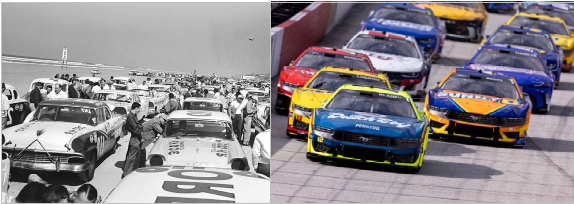
Does that indicate just how removed from reality I can be?
Despite the fact that it ain’t gonna happen, I’m going to reveal my fantasy here, just in case it might be of interest to future racing historians or psychiatrists. Ladies and gentlemen, prepare to dream with me.
Cars, rules & budgets
First of all, my post-apocalyptic racing would be a LOT less expensive, and we would devote a lot of effort to keeping it that way. This is where a lot of jobs would be lost, and while a lot of corporate CEOs get paid huge amount to eliminate jobs, I hate that part, but I don’t see any way around it. Big money has ruined racing, and only eliminating big money can start the back-to-the-way-God-intended-it movement.
It need not go back to where, in 1971 and ’72, I could drive through Tappahannock, Va., and see a Grand National/Cup Chevelle #50 parked under one of the floodlights at a gas station, but it needs to recede enough that a local hot shoe could obtain a legal post-Cup car and run a limited schedule with some hope of being reasonably competitive. Being allowed to race without 80-90% of the starting positions reserved for the club members would play a part, too – NO CHARTERS.
Something similar to the current CARS circuit race cars (or those of other regional groups) would work, although I want to be a little older school and call for sheet metal bodies, not variations on plastic/fiberglass.
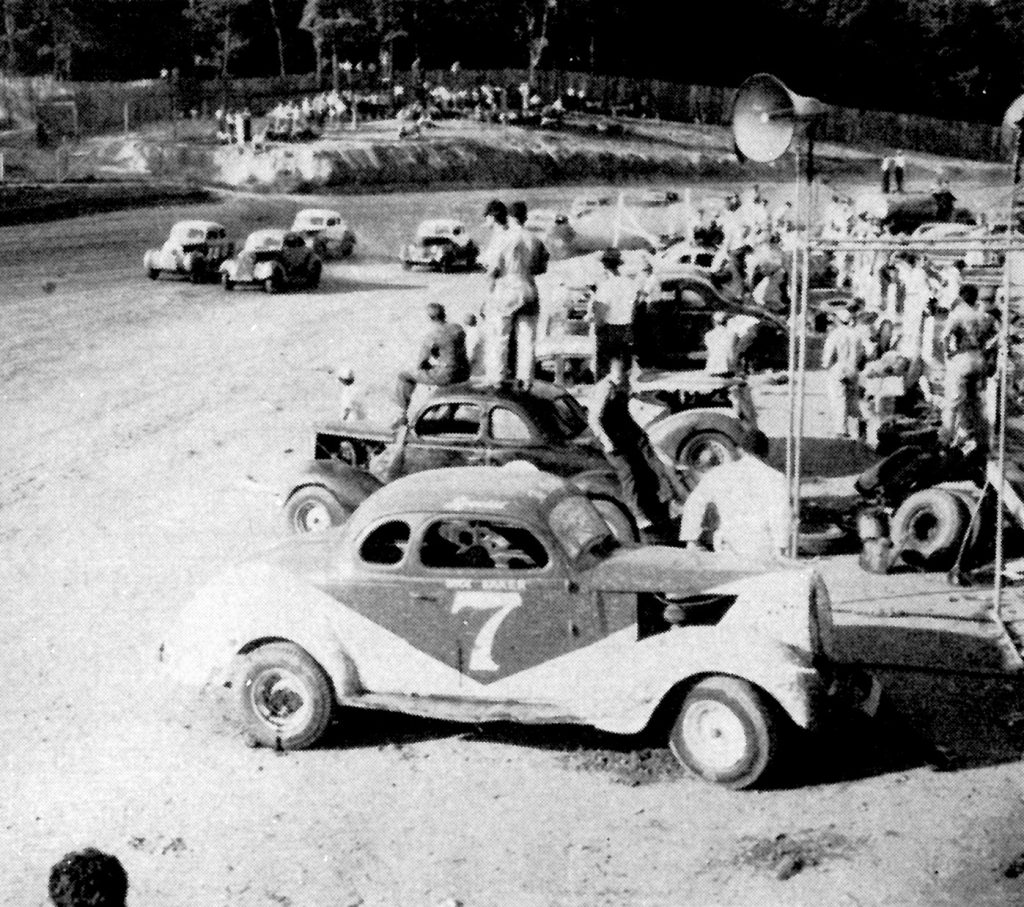
I’m not that mechanically inclined to be specific on rules, but I’ll say they should promote parity without completely stifling innovation. I know that’s difficult.
Looking ahead, I’ll suggest again that we switch the Xfinity Series to running SUVs, since that’s what everybody drives now. Also, at some point, a preliminary series with electric or at least hybrid cars has to start.
Races and tracks
Except for Daytona and Talladega, I don’t want to kick anybody off the schedule, but I’ll go back to some of my old suggestions about different approaches to races. For instance, we could have the Charlotte Triathlon, with a 100-miler on the speedway, another on the “roval,” and a 100-lapper on the dirt track. Each has its own purse (not like the dreaded stages), and there’s an overall bonus. It all happens in one day.
Lots of other possibilities exist. Curtis Turner said more than half a century ago that Charlotte could put a speed bump on the backstretch; we need that kind of thinking now.
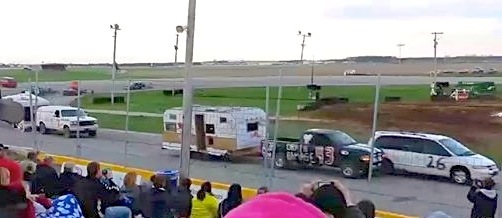
I’ll also repeat my “Legends of NASCAR” preliminary series, having short-track races on Thursday (or Friday) nights before the weekend’s Cup race. For instance, the Thursday night before Loudon could feature a race at Stafford Springs, and South Boston could run before either Richmond or Martinsville.
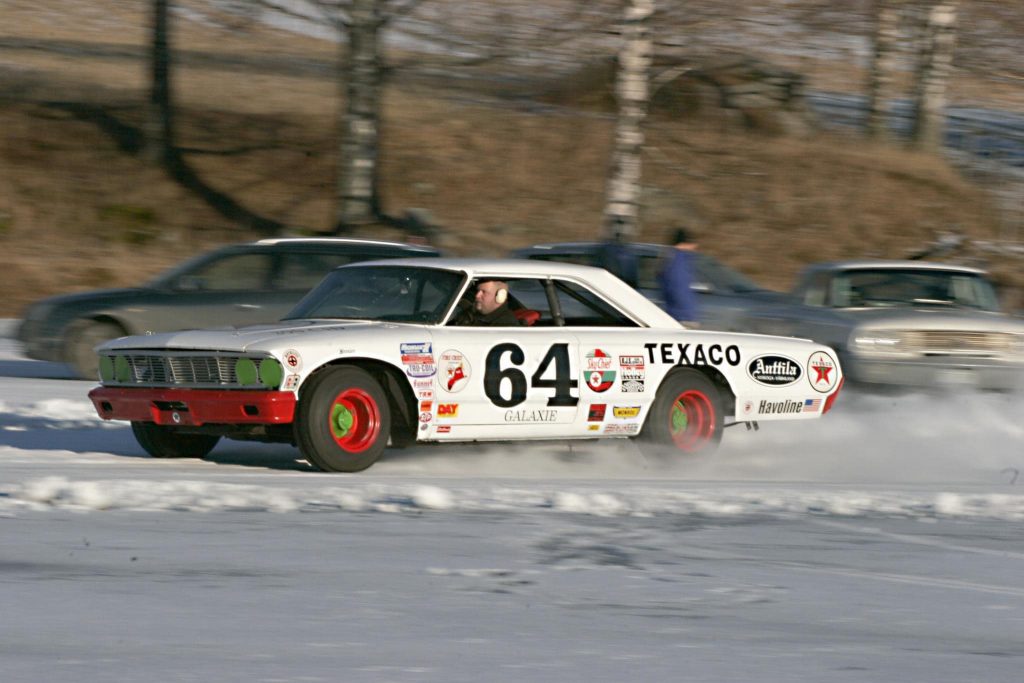
My other made-several-times schedule suggestion is to have a winter series, not like the old “Winter Heat” races ESPN was involved with, but at multiple tracks in warmer climates, including outside the U.S., possibly in the Caribbean or Mexico (this was before the 2025 Cup schedule was even in the dream stage). I’d love to see NASCAR in the St. Louis dome.
It’s important to note that these suggestions for scheduling depend on the ones made earlier for cost-cutting, because my vision would have the events largely supported by television revenue more than attendance (kind of like the more obscure football bowl games or college basketball tournaments), and there would only be enough money to do that if we didn’t need to support racing at its currently bloated level.
Building a bit more on that logic
All of this would have seemed absurd back in the NASCAR glory days before 2008, when seats couldn’t be added fast enough and sponsors were everywhere. Things are different today. Every time one of the TV shills says something about a race being a sellout, I want to ask how many seats were actually sold in 2024, compared to 20 years ago, before they took lots of them out and sold them to weekly short tracks. Richmond doesn’t sell out (which is one reason it has lost a date), but the ¾-mile track was built in 1988 with a seating capacity of about 53,000. The last race on the old ½-mile track had listed attendance of 40,000, but only a short period before that, the capacity had been less than 30,000.
At its peak, the track could squeeze in 110,000+ but today we’re closer to the half-mile than that. If we right-sized financial expectations, we could run just about anything we wanted.
Here’s a little history lesson, from before my time (something you might not have thought possible). In 1954, 70 years ago, NASCAR’s Grand National circuit ran 37 races, and the highest announced attendance was 28,000 for the Southern 500 at Darlington. Daytona’s beach-road course race drew 27,000. Langhorne in Pennsylvania, arguably the most important track after Darlington, drew 22,000, and – if you can believe the numbers – Williams Grove Speedway up here near me in Pennsylvania came next with 21,600, ahead of Atlanta’s Lakewood mile at 20,000.
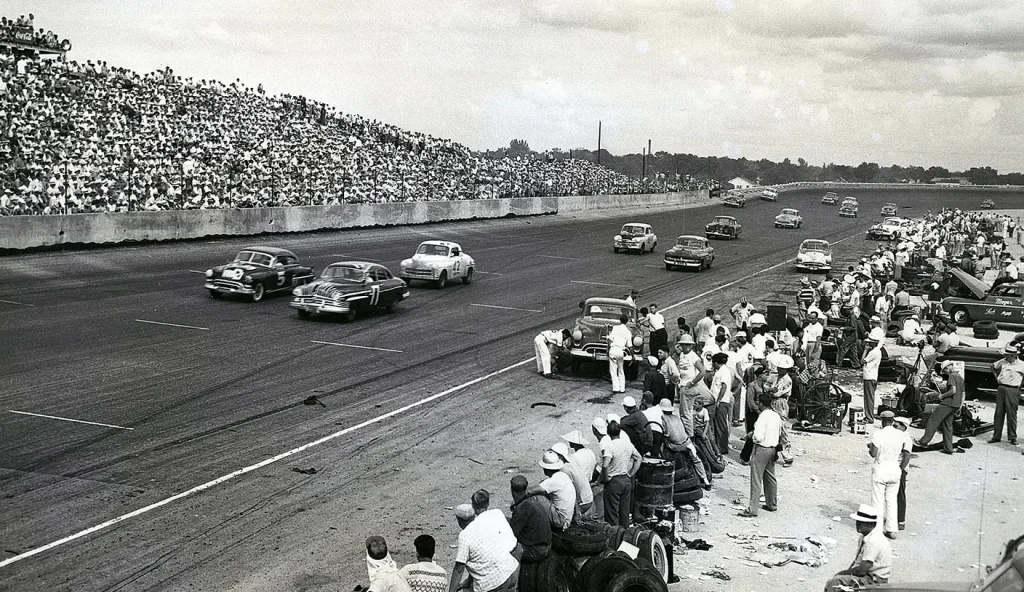
(Quick note: Williams Grove was a faithful open wheel track (Indy/”Big” cars, sprint cars, midgets), with only a couple of major stock car races a year, and even though the 1954 GN race must have been a financial success, it wasn’t repeated. After a couple of years with no traveling circuits putting in appearances, it was back to USAC, MARC/ARCA, or both.)
At the other end of the spectrum, of the 27 races for which Racing Reference has attendance figures, 16 were listed as under 10,000. (There were two figures that seemed to be tossed out frequently: 8,500 four times, and 4,000/4,500 five times.) Definitely a different world from a couple of decades ago, when it was the NASCAR remembered fondly by those who used to count the big bucks.
Obviously, 70 years ago there wasn’t as much money to play with, so while somebody like Carl Kiekhaefer might come along and spend dough like it was water, most top teams were more like Lee Petty and Herb Thomas – definitely on a budget.
That would be my goal today.
Conclusion, sort of
So I look back over all I’ve written above, and it occurs to me that, if I lived in the land of pave tracks and stock car racing, rather than dirt tracks and sprint cars or modifieds, I would be happy with CARS or one of its counterparts in other regions. And some indications are that it’s becoming easier to take that approach.
For one thing, that racing is no longer completely drowned out by NASCAR in the media, in part because NASCAR doesn’t have that much of a presence in traditional media anymore, aside from a few core markets. Instead, various websites and social media outlets have cropped up to cover the more grassroots forms of the sport. If this trend continues, we might get back to the days – roughly 50-75 years ago – when NASCAR didn’t dominate. Old National Speed Sport News front pages were a mix of big local races, Indy-related coverage, and NASCAR or USAC stocks. We haven’t quite figured out how to support all that stuff in this I-want-it-for-free era, but more and more racing news entities are surviving.
So maybe my fantasy is actually happening, albeit in worlds other than NASCAR. I think I can live with that. How about you?
Frank’s Loose Lug Nuts
I have mentioned the Eastern Museum of Motor Racing in my writing on numerous occasions. It’s one of the country’s best racing museums, and I’m drawn particularly to its research library, which also is top-notch.
There are various elements to its founding, but the most important single person in taking a 1980-ish dream and turning it into what it is today was Lynn Paxton. A great sprint car driver before he became a great museum curator, Lynn died last week at age 80. He was a living history museum himself, and he will be missed.
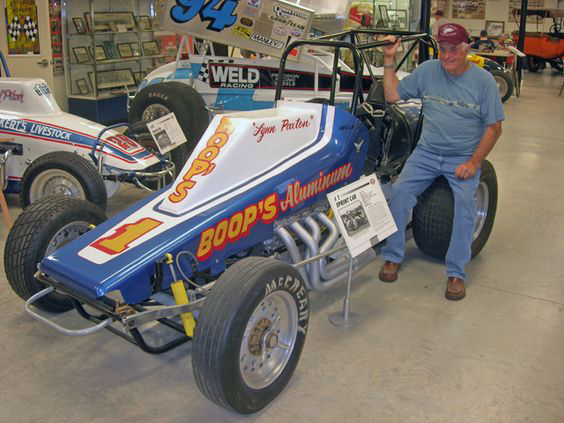
I always felt I was at a disadvantage talking with Lynn, because my background was in Virginia, not the upper Mid-Atlantic, where he raced and where the museum is located (just south of Harrisburg, Pa.), but I could listen to him tell stories forever.

He worked his butt off for that museum, and he was just a great guy to be around. I don’t think I’ll ever go up there again without thinking about how diminished the experienced will be without him in the house.
RIP, Lynn, and thanks for giving us more than you could have imagined.



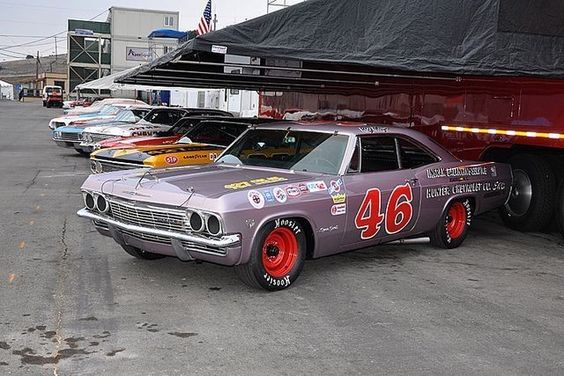
Frank, Really enjoyed this one. You provided intriguing perspectives and insights… and hope.
I too had hopes there would be some kind of sanity interjected into the situation but as always money, big money overrides sanity.
During it all, I wondered what would happen if there was a break off. What would happen if the owners, SMI and Penske broke off and formed their own series? It’s not as far fetched as it might appear. SMI and Penske have a fairly formidable footprint and with a reconfigured Atlanta they have the superspeedway they always lacked. Add in the Fairgrounds, dust off Kentucky, snatch Rockingham, lease Road America and you have a pretty diverse schedule with a ton of variety.
But tracks are just one component and you know there are just so many moving parts to pull together to make it happen I think it’s just outside the realm of possibility without some major outside source. And unless the model changes dramatically, if the teams can’t make it on the current TV deal money, where are they going to find a bigger and better one willing to take a massive chance on an untried new series? I had hoped SRX was a shot across the bow but that just showed how a pop gun fares against a howitzer.
I keep hoping that the CARS series can become what ASA used to be, the second best stock car series in the country. But that’s some hard plowing there as the Xfinity has raised its level substantially and the GEN-7 experiment hasn’t completed its trajectory yet.
Oh well. One can dream.
Amen to your other suggestions. I think a Winter Series is a great idea. I always hoped that a Winter Aussie Series would take off. Since it didn’t, I think it would be interesting to throw back to the old days and say start the next Truck Season shortly after the Cup Season wraps up. Let them do stand alone through the Winter. Make that the time when Cup drivers can compete there. Give that series a chance to shine, be showcased and fans to get interested in it before everything else fires up at Daytona.
I love your suggestion on “sellouts”. There should be three numbers reported by each track for each race-how many seats do you have, how many tickets have been sold and how many folks went through the turnstiles. Period. It’s being done, just not reported, except through unverifiable anecdotal declarations. Time to end that.
I think your predictions on Xfinity/SUV and EVs are sadly spot on. I had no interest in EV but after watching the Formula E finale I have to say the racing may not be what I had hoped but the production and coverage was impressive. Only a matter of time until 1:1 scale slot cars become the rage. Not sure I’ll make that transition.
You hit some nerves Frank and got some synapses flickering. That’s a good thing.
Thanks!
Thanks, David. I’m afraid my ideas only appeal to those whose vision of racing is what the sport was. The money these days wants a more controllable sport with predictable finances, not our priorities. Sadly, something will have to fail badly for anyone to consider the kind of ideas expressed here.
Thank you, Frank, for a vision of what was, is and could be. Although at times I kinda thought I was reading between the lines, I was thoroughly absorbed when reading this. So many times I would go back and re-read something to make sure I had understood it. You did good, and many times I wish I could do the research and dream as others do, but time is not of the essence it once was. You sure make me stop and think and I am sure others feel the same way. Thank you
Thanks, Vivian. Back when I was in the publishing business, we had a review “blurb” that we used about one of our authors that said, “Everything he says is worth reading, twice.” To this we jokingly added, “because you’ll never understand it the first time around.” I really needed an editor for this one to make it more readable; an editor should never edit his/her own writing, which is what I did here. So I’m glad you got something out of it, no matter how dense my writing was. I probably should have just said get rid of all that money and make it about people, and everything will work out fine. I believe that. A week ago Saturday the PA Sprint Series ran at Hagerstown Speedway and drew 53 cars. This for $400 to win, with an all-volunteer organization putting on the show. It was a really good race. Money ain’t everything.